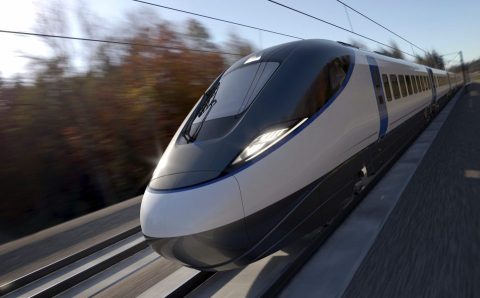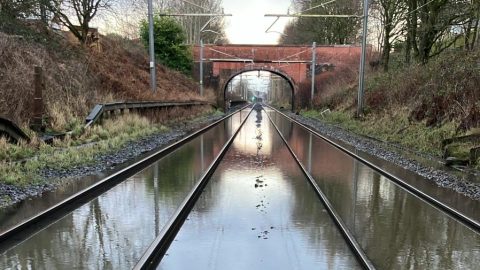Several injured in Scotland rail bridge crash
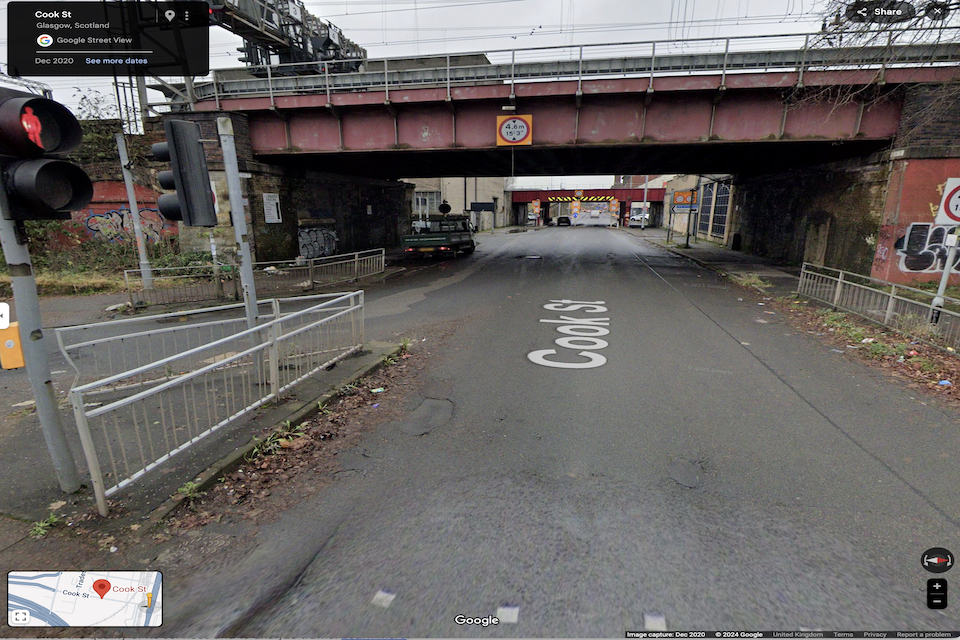
A Glasgow bus has crashed into one of the city’s notoriously low railway bridges. The accident has left several people in hospital, one of them critically injured. The accident came just a day after another rail-adjacent incident in Scotland, which closed the West Coast Main Line and injured one person.
Scotland’s narrow escape on Friday was, tragically followed up by a much more serious incident on Saturday. On Friday, a single truck left the road and crashed onto railway tracks. On Saturday, a bus crashed into a bridge in central Glasgow, resulting in several casualties. The incident caused major disruption to both road and rail traffic. Ironically, the national infrastructure agency had just relaunched a “bridge bashing” awareness campaign.
Premature relief at avoiding disaster
A collective sigh of relief was expressed after Friday’s lorry crash proved more spectacular than calamitous. Saturday’s incident, which is still under investigation by Police Scotland and the Rail Accident Investigation Branch, was much more serious, and also caused major rail and road disruption.
In the centre of Glasgow, a double-deck bus crashed into one of the city’s legacy of low Victorian bridges. The inevitable scene of the upped deck ripped open was evident. The only mercy was that the bus was lightly loaded, or the incident could have been very much worse. That said, seven people were hospitalised by their injuries, and one man remains in a serious condition.
Hospitalised casualties, one critical
The cause appears obvious. A repeatedly struck bridge was hit again on Saturday evening. The bridge is one of two low bridges at Cook Street, which carry all the lines out of Central Station. The easternmost of the bridges carries the West Coast Main Line. The western bridge, only a few metres further along Cook Street, is about a metre lower. It carries busy commuter lines and connects to the neighbouring city of Paisley, and many other towns in southwest Scotland. It was this bridge that was struck. All services to these destinations were suspended for around six hours. Roads in the area were also closed.
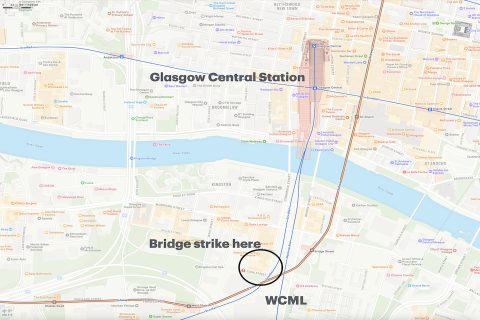
“Roads in Glasgow have reopened after a bus crashed into a bridge on Cook Street,” said a spokesperson for Police Scotland. “The incident happened around 5.55pm on Saturday [14 December]. There were 11 passengers on the bus. One man, aged 60, was seriously injured. He remains in a critical condition in [Glasgow’s] Queen Elizabeth University Hospital. “One woman and five men were taken to hospital for treatment to minor injuries. Four others were checked at the scene. The driver was not injured.”
Geography plays a part
Georgian and Victorian Glasgow was built on a grand scale. George Square, which the opulent City Chambers crowns, was the largest civic square in Europe at the time. Glasgow went large on all its civic and engineering projects. Perhaps the greatest achievement of the age was just a short walk from George Square. The vast Glasgow Central Station is still one of Britain’s biggest and busiest. Its impressive viaducts carry the longest platforms out over the River Clyde and into the southern suburbs of Scotland’s biggest city.
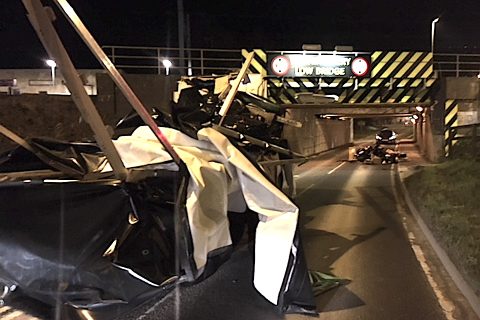
However, the south bank of the Clyde is rather higher ground than the north. That has left a series of low bridges, carrying the street-level tracks of Central Station out over the southside at just a few metres above head height. That legacy has proved a problem for today’s traffic, which is far from Victorian in scale. Much taller vehicles now use Glasgow’s roads every day. Sadly, they strike the city’s bridges with some frequency.
Bridge strikes remain a serious issue
Mostly, these incidents pass with no more than the considerable ire of inconvenienced Glaswegians. However, sadly, incidents such as Saturday’s crash have happened before. The same bridge at Cook Street was hit in almost identical circumstances only a year ago. That accident left ten people injured. Undoubtedly, investigations will call for a review of how safety at Cook Street is managed. Otherwise, a fatality seems inevitable.
Network Rail, the British infrastructure agency, frequently highlights incidents of bridge strikes – sometimes referred to as “bridge bashing”. The agency had only recently relaunched its awareness campaign. The frequency of bridge strikes in Great Britain is remarkably high. One incident is recorded every six hours – over 1,200 per annum. It’s with some relief that few are as dangerous as Saturday’s unwelcome outcome at Cook Street.

